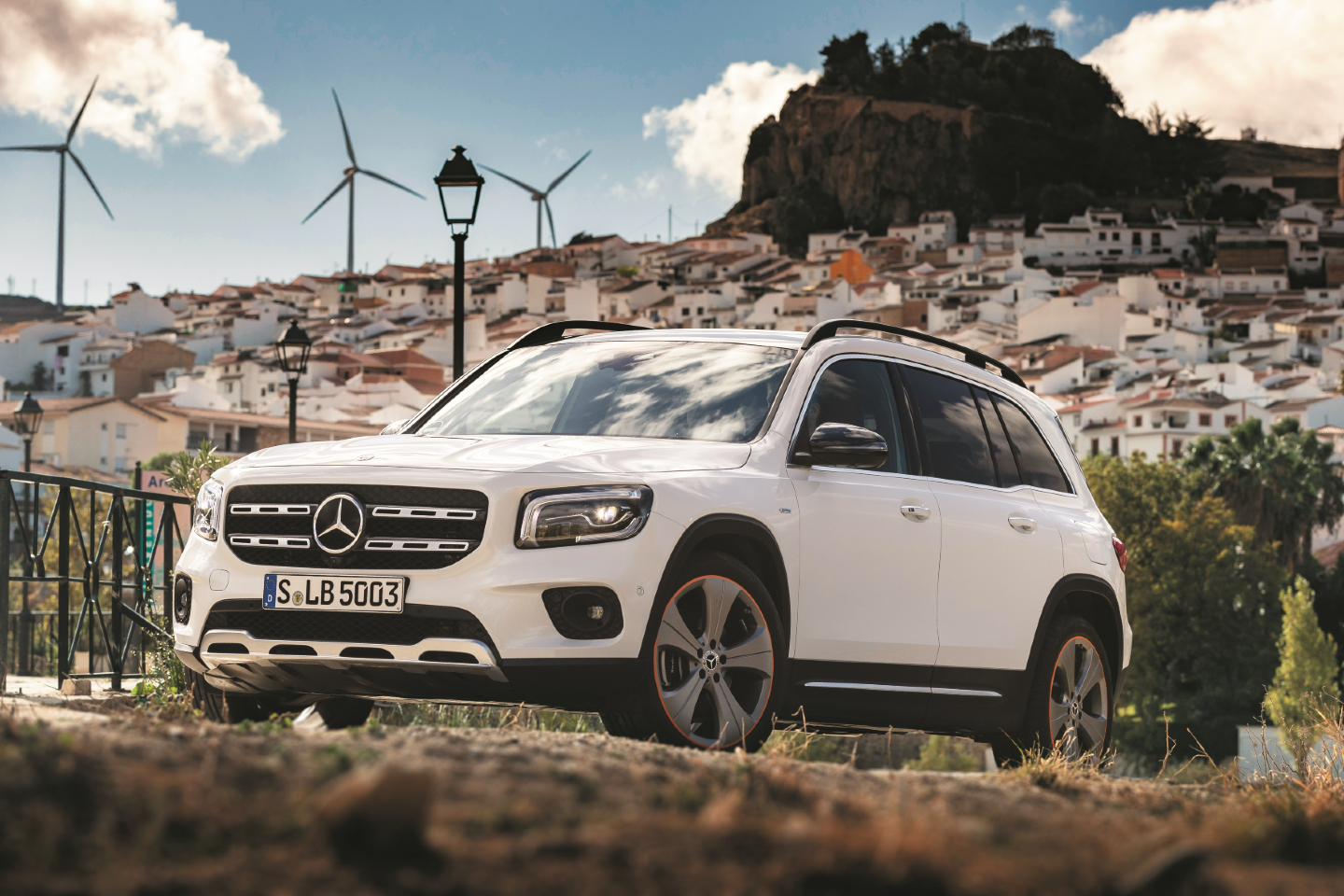
The GLB 4MATIC 250 (All photos: Mercedes-Benz)
A Tonka truck — that’s what I first thought when I saw Mercedes-Benz’s new GLB at its global launch in Spain last year. I received a bright yellow Tonka truck as a child and it was one of my favourite toys, and many aspects of the German marque’s seven-seater compact SUV are happy reminders of this well-loved gift, right from the high ground clearance to the forward-thrusting cabin.
First unveiled as a concept in April 2019 at the Auto Shanghai show and officially launched three months later, Mercedes-Benz’s GLB family is positioned between the GLA-Class crossover and the larger GLC-Class SUV in size. Because of its increased seating capacity — this compact SUV seats seven — one of the more exceptional details about the car is its size. At 2,829mm, the GLB has the longest wheelbase of Mercedes-Benz’s current compact-class generation. Together with the function-oriented greenhouse — visually, this is where the Tonka comparison fits in — this is decisive when it comes to the generous amount of space.
Although the car’s exterior designer Mark Fetherston did say Tonka trucks were one of his inspirations for the GLB, Mercedes-Benz’s official line is that the car’s design comes from its more muscular big brother, the mighty G-Class. Rugged in all the right places, the GLB commands a strong and distinctive presence, carrying the hallmark of the marque’s luxury and exclusivity. In Marbella, Spain’s coastal playground for the rich, this car was hardly the most luxurious, but it attracted its fair amount of attention nonetheless — especially when such a substantial fleet arrived in unison at the well-appointed Nobu Hotel Marbella.
19c0860_033.jpg
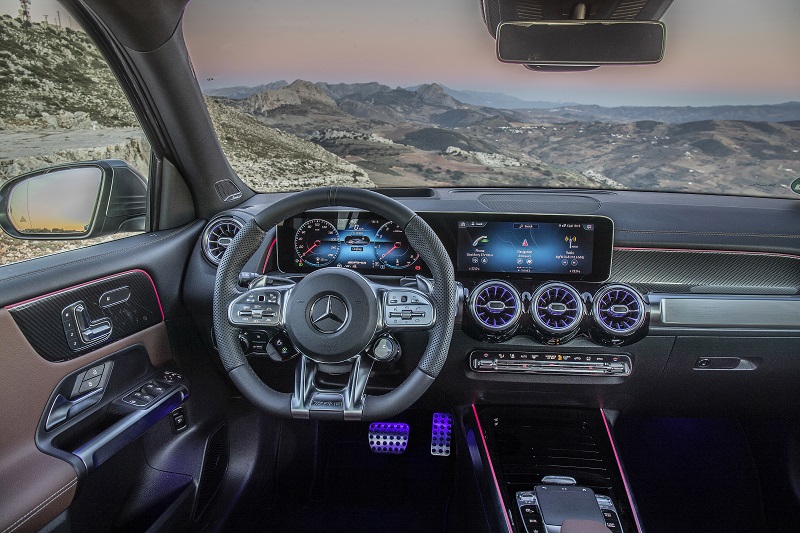
Roads in Southern Spain are not difficult to manoeuvre by any means, and even in the smaller villages, it is fairly easy to get around. The scenery can be quite distracting, though, which led to more than a few accidental detours — it’s hard to remain disenchanted by the stucco walls and wrought iron balconies typical of Andalusian architecture, and, of course, the glittering blue waters of the Mediterranean. The additional time with the cars gave us more opportunity to evaluate them in more real-life situations than mere highways — the GLB is incredibly well-suited for families and long drives — and also allowed us to pick our favourite model.
The GLB is Mercedes-Benz’s first compact car to offer a third row on request with two additional seats. People up to a height of 1.68m can get a comfortable amount of space, which means the average Malaysian can quite easily manage. The extra space does not come at the expense of safety and comfort, though — third-row passengers also enjoy extendable head restraints, seat belts with belt tensioners and belt force limiters on all outer seats and a side window airbag.
Isofix and top-tether anchorages allow children to sit safely and comfortably in the back row too — two drink holders, stowage compartments for snacks and games and a USB port to charge tablets make this car the perfect companion for road trips and family holidays. I had noticed that the car has an unusually low window line, which makes it easy for children to look outside when strapped in. For trips with fewer passengers, lower the seats and gain a healthy amount of boot space, with the added advantage of it being flush with the load compartment floor.
19c0859_053.jpg
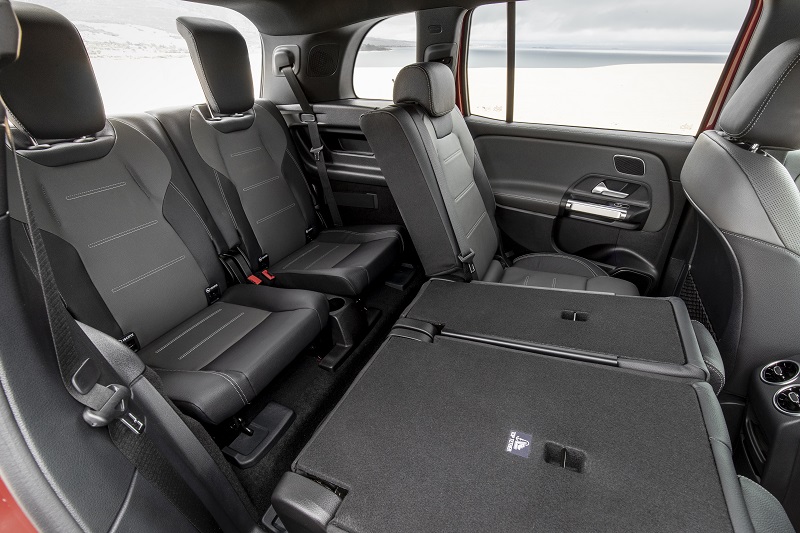
As a parent myself, these were all hugely exciting elements. The beautiful highways here in Malaysia lend themselves quite well to long road trips, and although no one could have foreseen Covid-19 back then, this car is an absolute gift to all the local travelling we will be doing for the foreseeable future. The GLB was launched for the local market in September, timed perfectly to capture the attention of families eager to start holidaying again after many months of staying put at home. Out of the full range of GLB models unveiled in Spain, Mercedes-Benz has brought three to Malaysia — the GLB 200, GLB 4MATIC 250 and the Mercedes-AMG GLB 35 4MATIC.
In terms of engine capacity and performance, all three cars propose very different scenarios. The GLB 200 is powered by a 1.33-litre turbocharged four-cylinder engine churning out 163 PS of maximum power at 5,500rpm and 250Nm of peak torque from 1,620 to 4,000rpm. The engine is paired with a 7G-DCT seven-speed wet dual-clutch transmission. With this set-up, the SUV can hit 0 to 100kph in 9.1 seconds and attain a top speed of 207kph. This variant is decent enough for city-centric travel, although I can certainly imagine when you are at full capacity, it’s going to be a little bit of an effort.
I much preferred the GLB 4MATIC 250, which benefits from more power and the permanent all-wheel 4MATIC system with fully variable torque distribution. The stats of this car get you a little more street cred, but not much — this is a family-friendly SUV, after all. The additional power comes from the two-litre turbocharged four-cylinder engine with the 8G-DCT 8-speed automatic transmission, which produces a maximum torque of 350Nm and does the centenary in 6.9 seconds. Even on urban roads, the difference in pickup and power is more obvious and, for a petrol-head like me, who prefers a bit more bite for my buck, this is the car I would go for.
19c0853_039_1.jpg
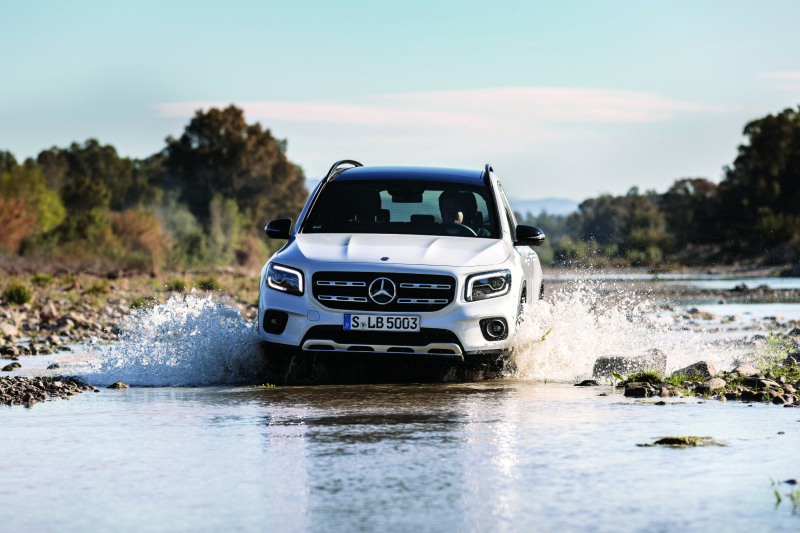
The top-of-the-line model in this category is the Mercedes-AMG GLB 35 4MATIC, which I was unable to get behind the wheels of. It is fitted with a turbocharged AMG two-litre four-cylinder engine, and guarantees impressive driving enjoyment in combination with the AMG Speedshift 8G-DCT 8-speed automatic transmission and variable AMG Performance 4MATIC all-wheel drive. It is capable of accelerating from 0 to 100kph in just 5.2 seconds — better than the other two models, and impressive enough considering this is an SUV.
In Spain, the Andalusia Enduro Park allowed us to try out the GLB’s off-road skills, which I was glad to witness from the backseat. I thanked my lucky stars I had yet to have lunch, as one of Mercedes-Benz’s experts teased one of the 4MATIC models over almost impossibly steep inclines, at one point even achieving a tilt of 28° — inches away from the maximum of 35 — with surprising ease, a testament to the car’s superlative build and suspension. I was more than comfortable in the backseat as all this took place, even if my heart was in my mouth most of the time.
Both cars drive in the same style typical of all Mercedes-Benz SUVs — agile, dynamic and fairly effortless — although the GLB 200 lags just a tad in this regard. Handling is smooth, the steering is steady — even if it is a little light for my liking — and it is an easy car to build chemistry with. It also has all the safety-related bells and whistles, making the decision to ferry your family in it that much easier.
From an exterior design perspective, the car’s powerful proportions underscore its off-road, rugged personality, with an emphasis on long surfaces, reduced lines and precise panel gaps. The upright front section with its striking headlamps is again clear evidence of its off-road genes, as are the short overhangs at the front and rear, while the front apron with visual skid plate emphasises its unmistakable SUV character. Another key feature of the front-end design is the distinctive air intakes in the front apron that are tailored to the contours of the radiator grille.
19c0855_002.jpg
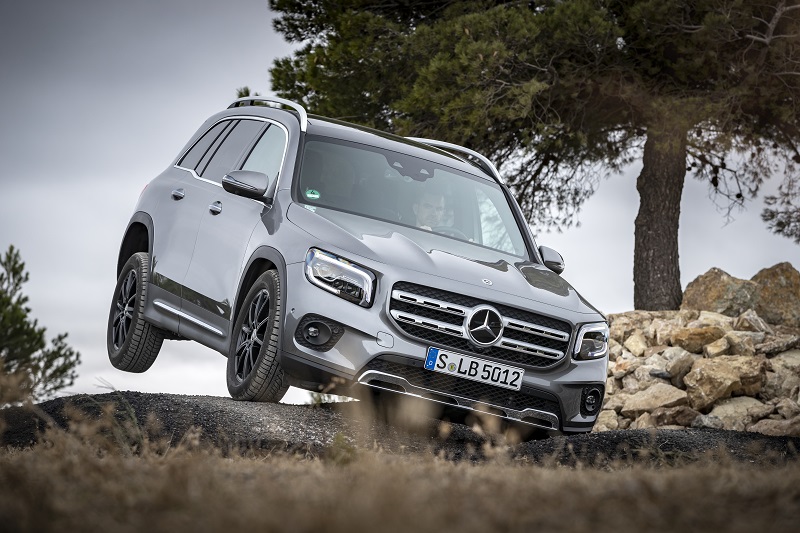
On the sides, the GLB is clothed with attached panels under the doors and wheel arches that further underscore the off-road impression and at the same time protect against stone chips. The GLB has a clear rear-end, emphasising width with two-piece tail lamps and reflectors relocated to the bumpers. The precise interior design of the tail lamps also ensures a high recognition value at night.
Inside, it is also quite typically Mercedes-Benz in terms of luxury materials — from the perspective of the driver and passenger, there is nothing to complain about. The instrument panel consists of a single panel with a cut-out in the driver and front passenger areas, while the driver gets access to a widescreen cockpit controlled by the marque’s now-famous Mercedes-Benz User Experience (MBUX) system.
What is new for the GLB is the off-road-like aluminium-look tubular element in the dashboard on the front passenger side. Below the round air vents, next to it are the air-conditioning controls, the buttons which create the impression of having been milled out of an aluminium cylinder. The robust character of the interior continues in the centre console, as similar tubular elements provide solid support for the components and controls.
This is a car you would want to put a down payment for on the spot — it is handsome enough, fits seven and drives well. The toy-truck-like forward-facing design — which is very unlike the more aerodynamic styling of the GLC, for example — is not for everyone, but once you are inside the car, it hardly seems to matter because of the drive quality. I tend to circle back to the Tonka truck comparison when I get asked about the car, but that is by no means a bad thing — these toys are enduring icons because of their distinct shape, and the truck was even inducted into the National Toy Hall of Fame at The Strong Museum in Rochester, New York. Incidentally, enduring and distinct are great descriptors for the GLB too, and just what you would be looking for in your search for a premium, dependable family car.
Prices of Mercedes-Benz’s new SUVs range from RM269,118.15 for the GLB 200 to RM318,000.26 for the GLB 4MATIC 250 AMG Line and RM363,136.52 for the Mercedes-AMG GLB 35 4MATIC. Visit mercedes-benz.com.my for more information or to book a test drive.
This article first appeared on Oct 5, 2020 in The Edge Malaysia.


